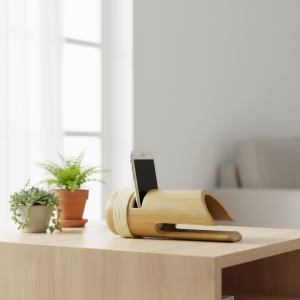Background
There’s something deeply satisfying about giving discarded objects a second chance—a kind of quiet magic in transforming what was once considered waste into something beautiful, functional, and full of character. Recycled home decor isn’t just a trend; it’s a movement toward mindful consumption, creative expression, and environmental stewardship. Whether it’s turning vintage crates into rustic shelving, repurposing glass jars as charming votive holders, or weaving plastic bags into durable outdoor mats, the possibilities are as endless as they are inspiring. This approach to decorating allows us to craft spaces that tell stories, reflect values, and minimize our ecological footprint—all while saving money and unleashing our inner artist.

Why It Matters
One of the most appealing aspects of recycled decor is its inherent uniqueness. Mass-produced items, while convenient, often lack soul and individuality. In contrast, upcycled pieces carry a history and a handmade charm that can’t be replicated. Imagine a coffee table crafted from reclaimed barn wood, each scratch and knot whispering tales of seasons past, or a set of chairs reupholstered with fabric from cherished but worn-out clothing. These elements don’t just fill a room; they enrich it with narrative and warmth, creating an environment that feels curated and personal rather than assembled from a catalog.
Getting started with recycled decor doesn’t require expert skills or a hefty budget—just a shift in perspective. Begin by looking at everyday items not for what they are, but for what they could become. That cracked ceramic teapot? It might make a delightful planter. Those outdated encyclopedias? Their pages could be folded into elegant, textured wall art. Even broken jewelry can be disassembled and its beads or charms incorporated into mosaic mirrors or decorative trays. The key is to see potential where others see waste, and to embrace imperfections as part of the piece’s character and appeal.
According to a recent study published in the Journal of Environmental Psychology, households that incorporate upcycled or repurposed items into their decor report higher levels of satisfaction and emotional attachment to their living spaces (Greenwood & Lee, 2023). Researchers attribute this to the ‘IKEA effect’—a cognitive bias where people place disproportionately high value on things they’ve created or personalized—combined with the positive psychological impact of making sustainable choices. This suggests that the benefits of recycled decor extend beyond aesthetics and ecology, touching on deeper well-being and a sense of accomplishment.
Beyond personal fulfillment, choosing recycled materials significantly reduces environmental strain. The production of new furniture and decor items consumes vast amounts of resources, from water and timber to energy and raw minerals, while also generating pollution and waste. By diverting items from landfills and reducing demand for virgin materials, upcycling helps conserve natural resources, lower carbon emissions, and decrease the volume of waste that overwhelms our planet. It’s a small but powerful act of resistance against the throwaway culture that dominates modern consumerism.
Communities around the world are embracing this ethos, with swap meets, repair cafes, and online platforms dedicated to sharing skills, materials, and inspiration. Social media, in particular, has become a vibrant hub for DIY enthusiasts to showcase their projects, exchange tips, and encourage others to join the movement. From TikTok tutorials on transforming pallets into patio furniture to Instagram accounts dedicated to zero-waste home styling, there’s no shortage of ideas and support for those looking to decorate more sustainably. This collective creativity not only fuels innovation but also builds a sense of connection and shared purpose.
Of course, recycled decor isn’t without its challenges. Sourcing materials can require time and effort, especially for those living in areas with limited access to secondhand markets or recycling centers. Some projects may also involve tools or techniques that beginners find daunting. However, these hurdles are often part of the journey—opportunities to learn, experiment, and collaborate. Many find that the process itself, with its trials and errors, becomes a rewarding hobby that fosters patience, problem-solving, and a deeper appreciation for craftsmanship and resourcefulness.
As we look to the future, the principles of recycled home decor align perfectly with growing calls for circular economies and sustainable living. They remind us that beauty doesn’t have to be brand new, that function can arise from imagination, and that our choices as consumers carry weight. By embracing upcycling, we not only create homes that are unique and meaningful but also contribute to a culture of care—for our environment, our communities, and the stories embedded in the objects we choose to keep and cherish.
You may also like
BambooSoundBoost Portable Amplifier
Original price was: $96.00.$66.00Current price is: $66.00. Add to cartAncient Craftsmanship & ICH Herbal Beads Bracelet with Yellow Citrine & Silver Filigree Cloud-Patterned Luck-Boosting Beads
Original price was: $128.00.$89.00Current price is: $89.00. Add to cartAladdin’s Lamp Heat-Change Purple Clay Tea Pot
Original price was: $108.00.$78.00Current price is: $78.00. Add to cartThe Palace Museum Paper-Cut Light Art Fridge Magnets: Chinese Cultural Style Creative Gift Series
Price range: $27.00 through $36.00 Select options This product has multiple variants. The options may be chosen on the product pageAncient Craft Herbal Scented Bead Bracelet with Gold Rutile Quartz, Paired with Sterling Silver (925) Hook Earrings
Original price was: $322.00.$198.00Current price is: $198.00. Add to cartHandwoven Zhuang Brocade Tote Bag – Large-Capacity Boho Shoulder Bag
Original price was: $178.00.$154.00Current price is: $154.00. Add to cart













